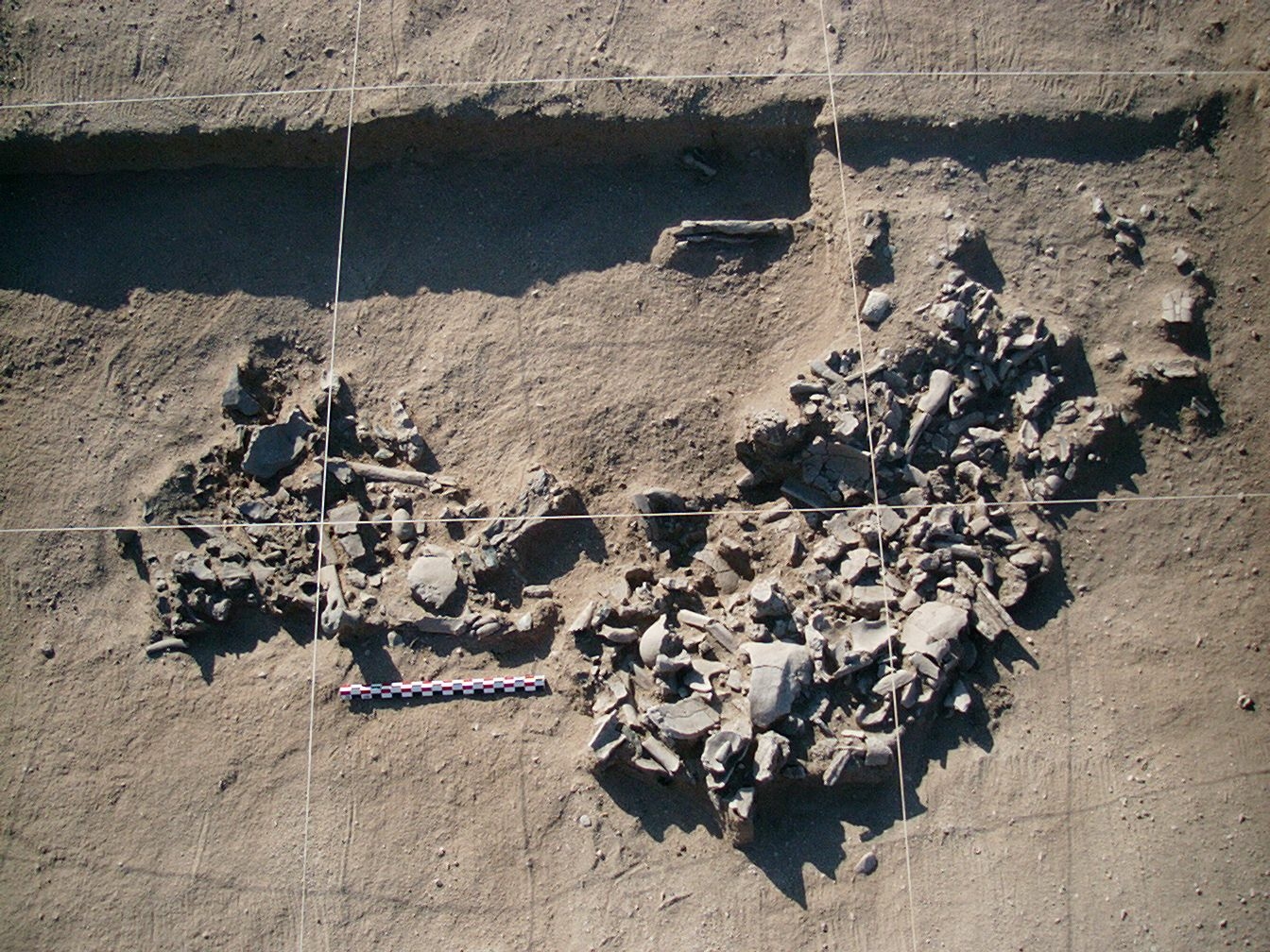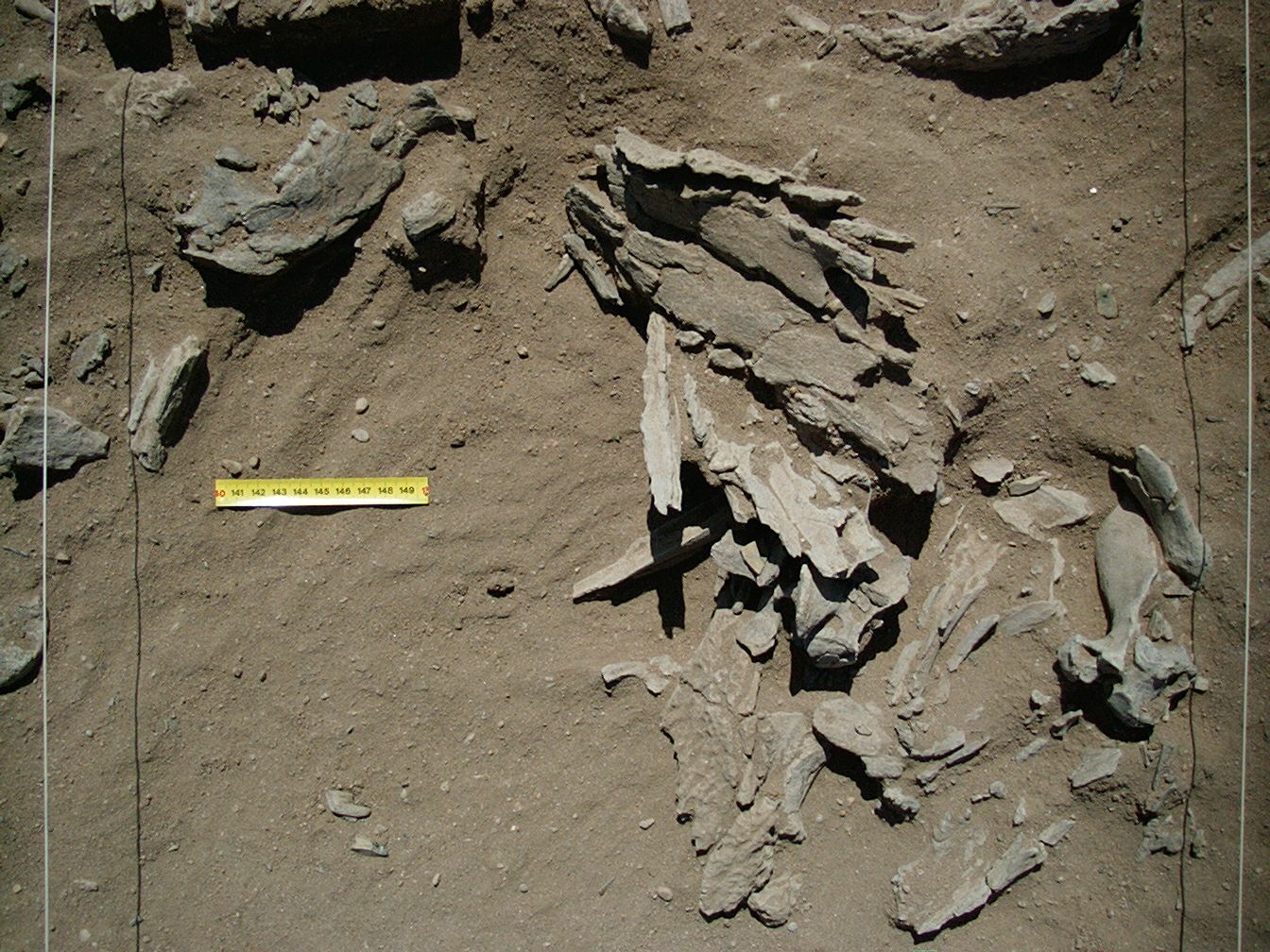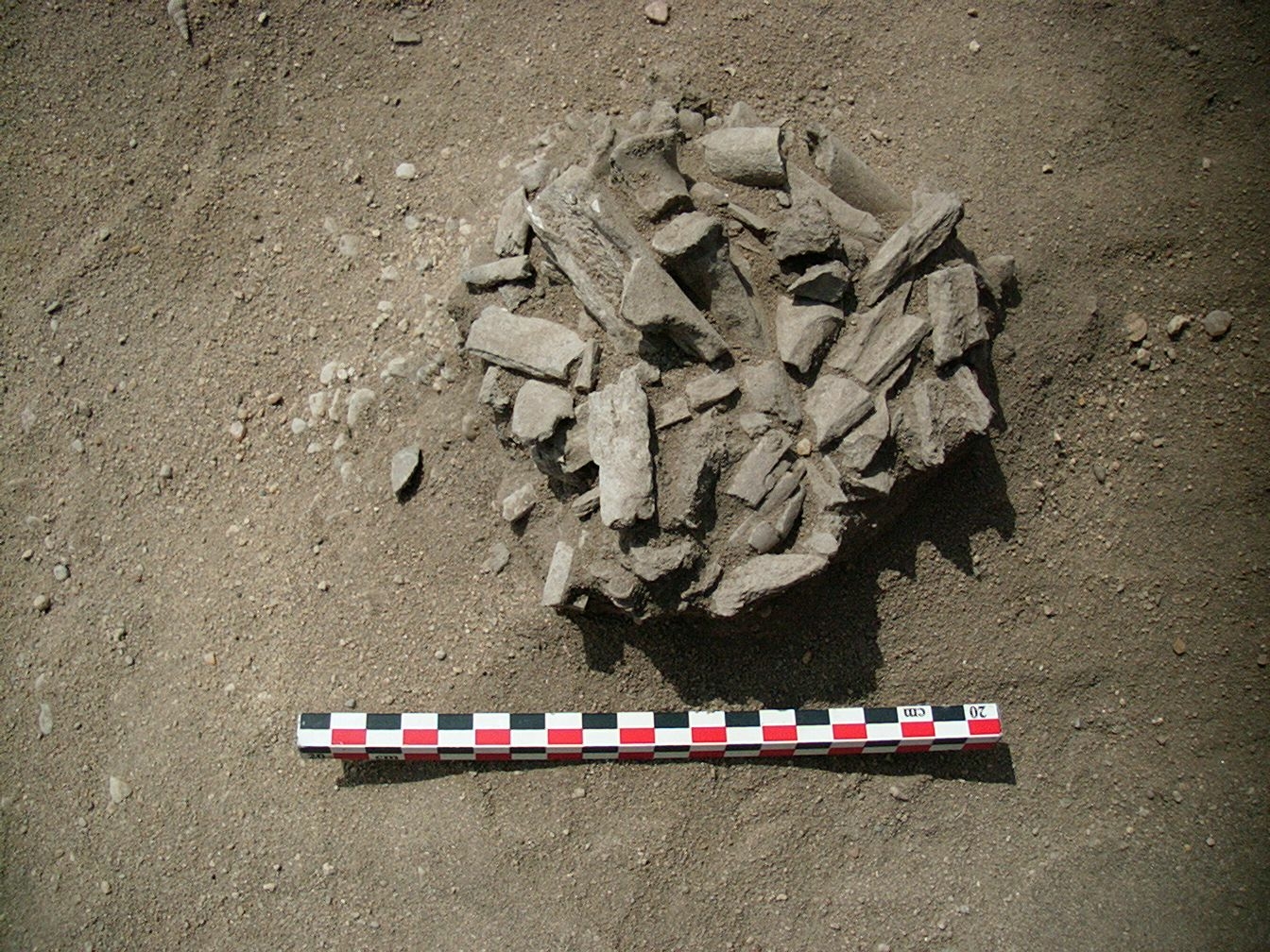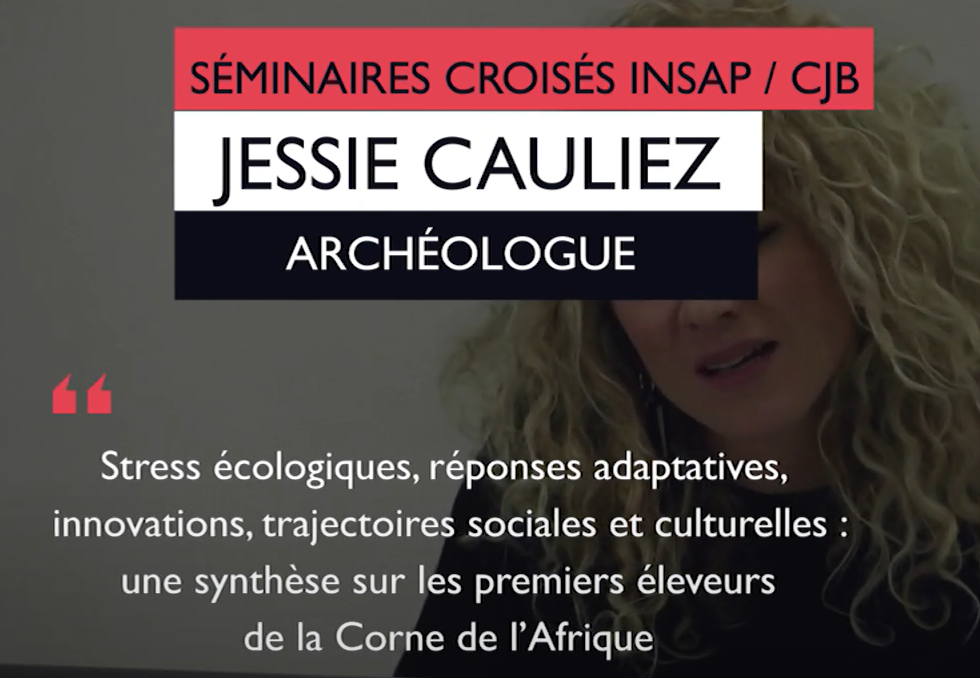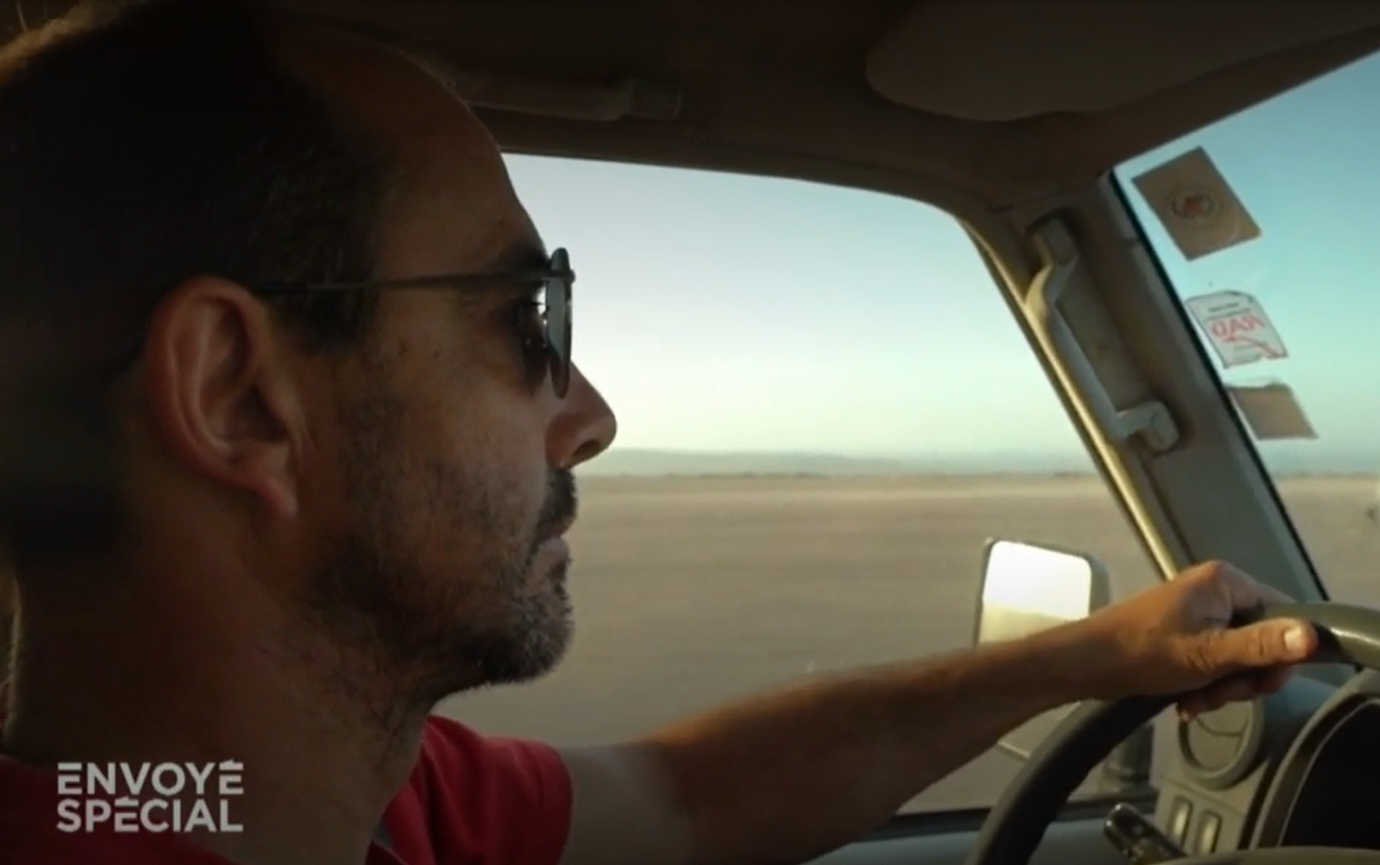Ali Dabba
On the site of Asa Koma, three individual pit burials were discovered in the first years of the excavations in Gobaad. Several other ancient funerary sites where subsequently uncovered and partially excavated. In the Ali Daaba sector, some fifteen burials with funerary deposits found fairly close to one another had varied and sometimes unexpected forms. Some of these deposits, dated to the first half of the 4th millennium BCE, are the oldest found in the lake basin for the Holocene period.

The various sites in Ali Daaba were discovered gradually during the course of the systematic surveys carried out as part of the research programme in an area measuring approximately 3 km long and 500 m wide – a sort of succession of dune ridges surrounding erosion basins. This sector of the basin is called Ali Daaba, this word means saddle or ridge, in the geographic sense of the term, or it may refer to the word Dabba which means gully or small wadi (Morin, 2012).
Several heaps of bones...
Of the 15 sectors identified, let us look first at sectors 2, 3, 10 and 12 containing the remains of bones dating from the early 4th millennium BCE. These piles of animal and human bones, some complete and others incomplete, tangled together or grouped into fragments of human bones, were deposited in shallow artificial basins. These bones display multiple signs of burning, but the most surprising feature is the composition of several of the assemblages: human bones are closely associated with the skulls of crocodiles, the teeth of hippopotamuses, the bones of carnivores such as leopards and lions, and fish bones. This procession of fauna attests to wetter climatic conditions than those today and the existence of a savannah with trees. Several of these animal bones were pierced or shaped to turn them into personal adornments. Pierced shells were also among the artefacts found in the graves. Modelled pottery was completely absent, whereas obsidian lithic industry is present in the form of flakes from debitage and geometric microliths (segments).
... attesting to funerary practices
The taphonomic study of human bones rules out the hypothesis of cannibalism. They are in fact rather unusual funerary deposits, the dating of which provides us with two indications: the deposits were formed during a period when the waters of Lake Abbe were high, a millennium before aridification when artisan pottery first appears in the region.
The same sector of Ali Daaba contained other forms of funerary deposits in the shape of a dozen individual primitive burials in shallow pits. These burials do not contain grave goods. In one of them, the head of the deceased, a particularly sturdy adult, was deliberately removed from the body before burial and placed in the grave under the right humerus bone. Unfortunately, since there is no collagen in the bone remains, none of these individual burials have yet been dated.
The mission
The project is supported by the French Ministry for Europe and Foreign Affairs on the advice of the Excavations Board (Commission des fouilles).
The Premières Sociétés de Production dans la Corne de l’Afrique mission (French Ministry for Europe and Foreign Affairs and IRAH in Djibouti) has been directed since 2013 by J. Cauliez (CNRS, UMR 5608 Toulouse). It was created in 1984 by R. Joussaume and led from 2001 to 2013 by X. Gutherz. From 2000 to 2006 the burial component of the programme was implemented to completion in the Gobaad basin, under the direction of Henri Duday, assisted by Stéphane Hérouin, anthropologists reporting to the UMR 5199 (PACEA Bordeaux).
The mission’s other sites:
Useful links
- Presentation of the mission on the website of the Laboratoire Traces UMR 5608 – Toulouse
- The mission has been awarded the SEEG label: Global ecology study sites or SEEG (CNRS – INEE programme)
- Mission implemented under an agreement with the Centre Français des Études Ethiopiennes IFRE 23 – USR 3127, Addis Ababa, Ethiopia
- Mission implemented in partnership with the Institut des Déserts et des Steppes
- Sponsorship




